Did you know that there are 23 major commercial tuna stocks? While each species can have multiple genetic stocks, as a consumer, you’re most likely to come across only a few species: the albacore, the bigeye, the skipjack, the yellowfin or one of the three bluefin tuna species.
You find tuna in all of the world’s oceans; from the Atlantic to the Pacific, the Indian Ocean, and including many seas such as the Mediterranean and Caribbean Sea.
Skipjack tuna prefer their waters warm, so you find them in the more tropical areas of the Atlantic, Indian, and Pacific Oceans. The average weight of skipjack tuna caught in the Indian Ocean is around 3.0 kg for ‘purse seine’, 2.8 kg for the Maldivian pole-and-line boats using bait, and 4–5 kg for gillnet fisheries. This species can reach lengths of 1.2m (3 feet) and have a comparatively short life span of around 7 years. Skipjack tuna typically start reproducing in their second year of life. Skipjack tuna are highly fertile, which is aided by their warm environment. They can spawn opportunistically throughout the year and big females can produce up to 1.25 million eggs per batch.
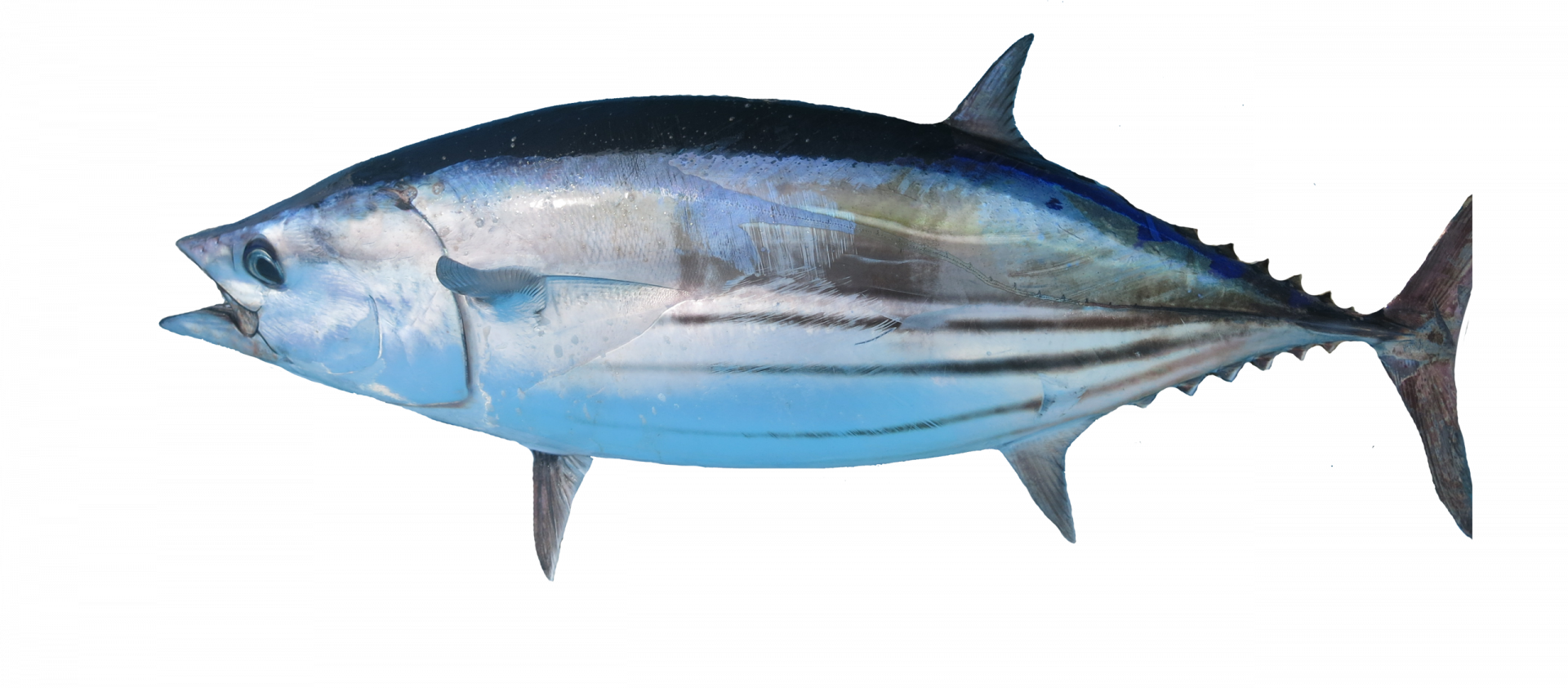
Except for albacore, the raw flesh of tuna is a dark red colour, however, when cooked, it turns more brown or grey. If you like your fish to be firm, healthy and tasty, one-by-one-caught tuna will be one of your favourite protein sources.




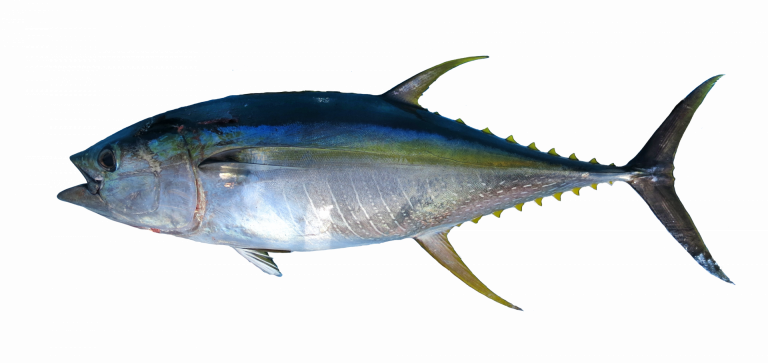
Yellowfin tuna live worldwide in both tropical and subtropical waters, but they stay away from the Mediterranean Sea. Like other tuna species, they are highly mobile and conduct large oceanic migrations in search of food and favourable conditions for spawning.
Their length averages at 1.5m (4,92 ft), with the maximum recorded length being 2.39m (7,84 ft). The max. published weight is 200.0 kg and they can reach 18 years of age!
Yellowfin tuna like to school primarily by size, either in monospecific or multi-species groups. Their diet consists of other fishes, crustaceans and squids. They are sensitive to low concentrations of oxygen and are therefore not usually caught below 250m depth in the tropics. Yellowfin tuna are multiple spawners, meaning they spawn every few days over the spawning period.
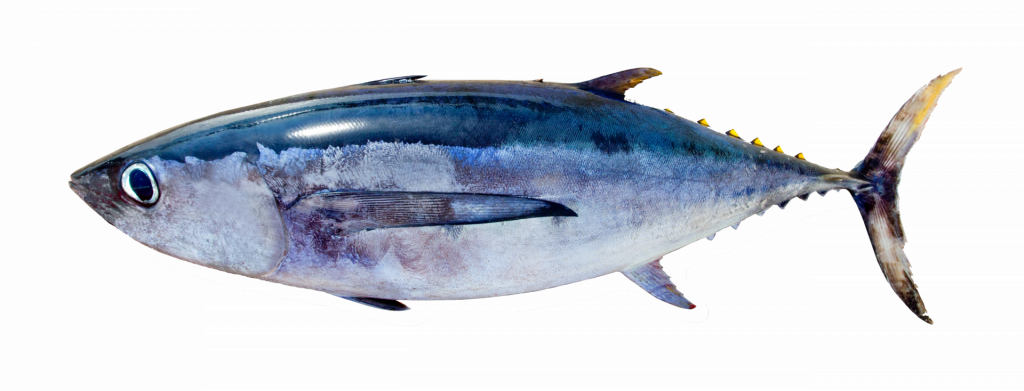
You typically find albacore tuna in tropical and subtropical waters. They can weigh up to 40kg (80 pounds) and can grow to lengths of 1.2m (4 feet). An albacore’s lifespan is up to 12 years with reproduction tending to occur around 5 years of age. They tend to travel in single-species schools.
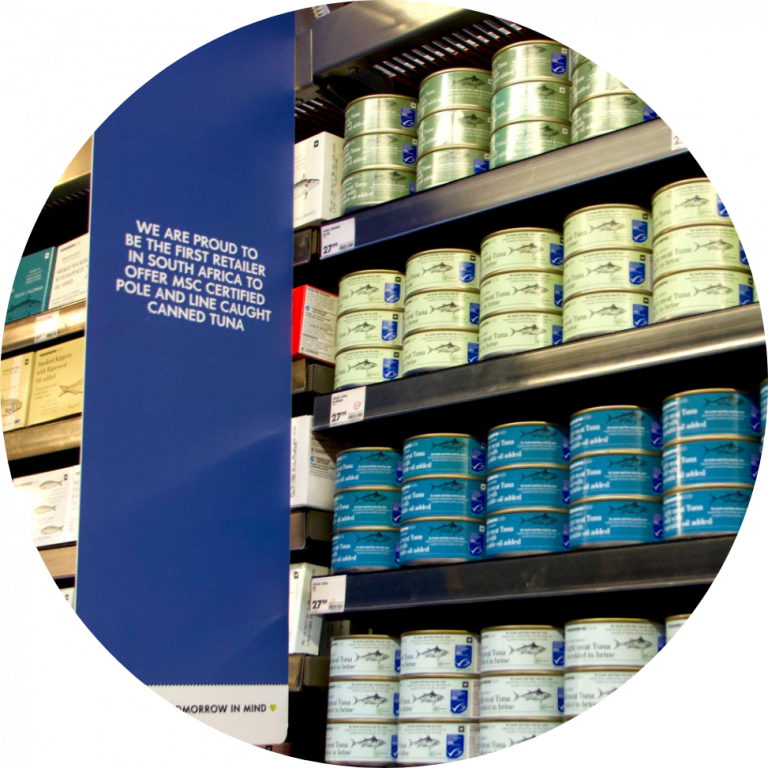
Albacore are hugely important for the canned tuna sector; normally labelled as ‘solid white’, ‘chunk white’ or ‘chunk light’. ‘Solid white albacore tuna’ is lightly colored, whereas ‘chunk white albacore tuna’ is white and generally contains larger pieces.
Now that you know the different albacore varieties available in your local supermarket, do you also know how to distinguish your albacore tuna from other tuna species in the wild?
Both of these types are mild in flavour and firm in texture. ‘Chunk light tuna’ contains a mix of different species, such as skipjack or yellowfin. The texture is softer and its colour generally darker with smaller, flakier pieces. Another difference is its strong flavour.




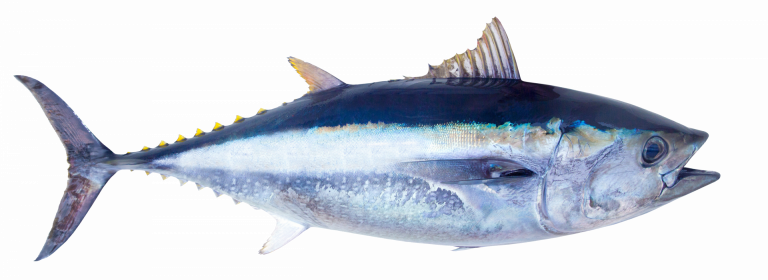
Bluefin tuna migrate great distances in waters of the Atlantic, Indian and Pacific Oceans. There are 3 species of bluefin tuna; the Atlantic bluefin, the Pacific bluefin and the Southern bluefin. They are among the larger bony fishes and include the largest tuna species, reaching lengths that exceed 3 meters and weights of more than 720kg (1584lb).

The largest one recorded as caught by a rod and line (one-by-one method) sport fisherman weighed an impressive 680kg (1496lb), a world record that’s now stood for over 40 years. Like other tuna species, they use a heat exchange system to maintain their internal temperature up to 10C above the surrounding temperature, which increases their efficiency as top predators. They can even live to be more than 30 years old – wow!

Japan is the biggest consumer of bluefin tuna, followed by the USA and China. Bluefin tuna achieves premium values in sashimi and sushi markets, with one fish being sold for $3.2 million USD during Japan’s famous New Year’s auction of 2019. However, the bluefin tuna species range from Endangered to Critically Endangered on the IUCN Red List. Concerning population declines and high value of these fish means that bluefin tuna stocks need to be very carefully and strictly managed to ensure future sustainability.





Big-eye tuna is a widespread, migratory and relatively fast growing tuna species found in open waters of all tropical and temperate oceans (excluding the Mediterranean sea!). They can live longer than 10 years, achieve sexual maturity at 3-4 years and can reach lengths exceeding 1.8m. Mature bigeye tuna can spawn multiple times per year when environmental conditions are favourable.


One of the main threats facing various tuna species is the harvest of juveniles that congregate around drifting Fish Aggregating Devices (dFADs), which make it easier for purse seine fleets to locate and harvest entire schools of these fish. In 2019, IPNLF have played and we continue to plan an important role in the development and promotion of a stock rebuilding program that was endorsed by ICCAT to address this and other issues causing the Atlantic bigeye tuna stock to be overfished and facing continued overfishing in the prior assessment.




5 steps on how to take responsibility when choosing your tuna in 2021

Together, we can ensure we access what nature offers us in the most responsible and sustainable way, so our children and even their children are able to enjoy this beautiful and delicious fish.



Did you know that tunas are highly migratory? They migrate for several different reasons, ranging from food to temperature or for preferred environmental conditions to spawn.


Do you have a bigeye for tuna knowledge, or did you skip(jack) your training?
Think you can alba-score the highest?
Here’s your oppa-tuna-ty to quiz yourself.

